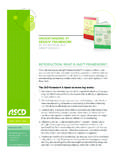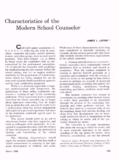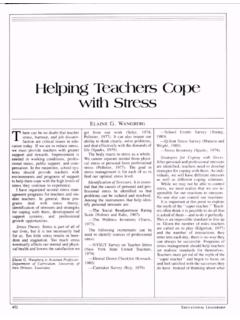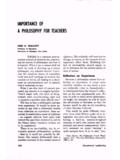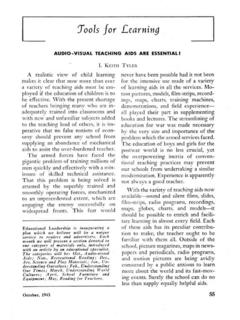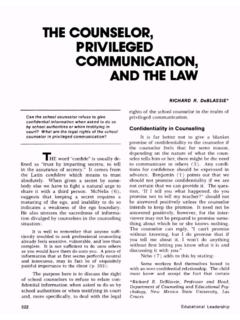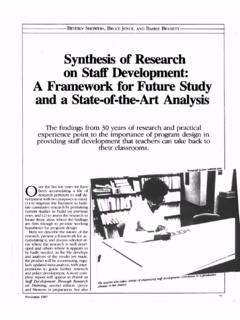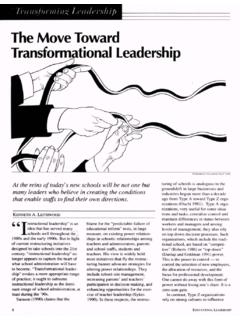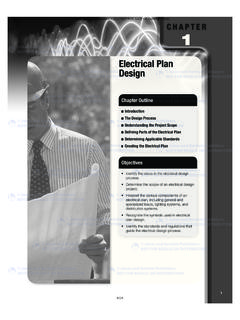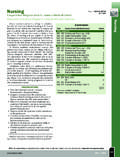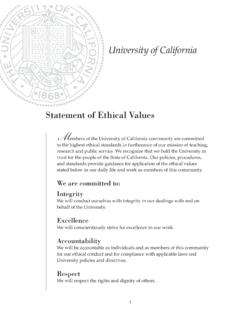Transcription of The Common Core State Standards Initiative - ASCD
1 1 Current StatusThe Common core State Standards Initiative (CCSSI) is a joint project of the National Governors Association (NGA) and the Council of Chief State School Officers (CCSSO) to develop Common K 12 reading and math Standards designed to prepare students for college and their careers. In May 2010, ascd officially endorsed the Common core Standards are internationally benchmarked and backed by evidence showing that students mastery of them leads to preparedness for higher education and the workforce. The Initiative defines college and career readiness as the ability to succeed in entry-level, credit-bearing academic col-lege courses and in workforce-training programs. The Standards are intended to be useful to classroom teachers and accessible to students, parents, and the general public.
2 In addition to outlining key content that students must understand, the Standards emphasize cogni-tive skills so that students are able to apply what they learn and creatively problem at the varying quality of academic Standards among states and of the resulting wide disparities in student proficiency as measured under the No Child Left Behind Act (NCLB) and high-lighted by National Assess-ment of Educational Progress (NAEP) scores, Secretary of Education Arne Duncan has made higher State academic Standards and the widespread adoption of the Common Standards across states one of his top reform priorities. states that adopted the Standards received extra points on their Race to the Top grant application and the Secretary has dedicated $350 million to help two consortia of states develop the next generation of Common State assessments aligned to the new Standards .
3 Moreover, the administration s ESEA blueprint would make Title I funding contin-gent on states adopting the three states and the District of Columbia have adopted the Common core Standards as of June 1, 2011 (see map below). states Next StepsState adoption of the Common core Standards marks the launch of the careful work over the next two to three years necessary to ensure that alignment occurs The Common core State Standards Initiativeat all levels, and that substantial supports are devel-oped so that the Standards are fully operational in a cohesive accountability system. These supports would help with the following: WDetermining how multiple levels of assessment inform how well students are mastering the Standards WDeveloping engaging and challenging curricula that unpack the Standards WCreating lessons for instruction that align with the Common coreThe newer, higher Standards will require schools and communities to better and more comprehensively support student learning if students are to meet these enhanced expectations.
4 For the Common core Standards to succeed and have maximum impact, they also need to be part of a whole child approach to education that ensures students are healthy, safe, engaged, supported, and challenged. Click here for more information on whole child education. Equally critical to the success of the Common core , classroom teachers must be fully equipped to elevate the Standards from mere words to tangible improve-ments in learning. Indeed, the new Standards are more advanced and require students to learn more specific content knowledge as well as demonstrate a deeper applied understanding of their learning. As such, prospective and veteran teachers will have to reconsider how best to teach students the Standards and determine their comprehension.
5 For future teach-ers, State teacher preparation programs and licensure policies will need to be revised to align with the new Standards . Educators will need targeted professional development to help them understand the Standards , develop new lesson plans, deliver effective instruc-tion, and utilize assessments that are aligned with them. Click here for more information on capacity-building professional to ConsiderAs states , districts, and schools begin to implement the Common core Standards , other issues need consider-ation. This ongoing implementation process provides school leaders with various opportunities to help further shape the Standards , and the policies and resources that support them at both the State and local levels.
6 WAdditional Standards At their discretion, states are allowed to supplement the Common core Standards with an additional 15% of State -specific Standards . Furthermore, although stan-dards in science and social science are being considered, the Common core s Standards cur-rently address only English language arts and mathematics. Effectively integrating all content areas into instruction is essential for students to receive a comprehensive education. WAssessments Several critical issues must be resolved to equitably preserve the Common core s capacity to bring comparability among states with new Common assessments under development by the two State consortia that would replace existing individual State assess-ments and will require the establishment of new proficiency levels and cut scores.
7 WESEA reauthorization It remains to be seen how the Common core Standards will be incorporated into the reauthorization of the El-ementary and Secondary Education Act (ESEA), particularly regarding assessment and account-ability policies. Congress is expected to address ESEA in 2011. WGraduation requirements states may need to revise their graduation requirements to be consistent with the college- and career-readi-ness goals of the K 12 Common core Standards . WSpecial populations The special needs of students with disabilities and English language learners must be taken into account. 2 Visit ascd s Common core webpage at to stay informed on the latest Common core developments and to access implementation resources.

